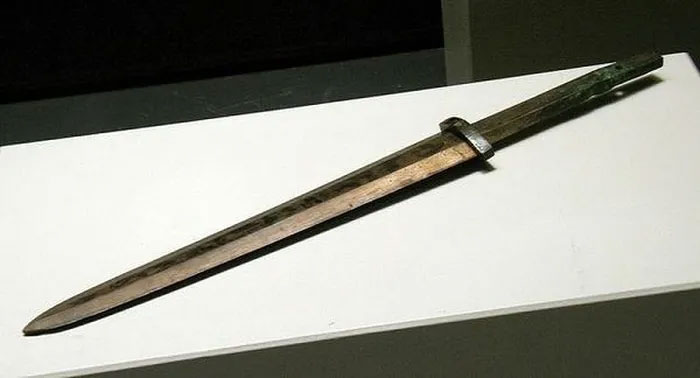Why are the weapons in the 2,000-year-old Qin Shi Huang tomb still shiny?
More than 8,000 life-size terracotta warriors were discovered in the tomb of emperor Qin Shi Huang in Xi'an, China, in 1974.
But nearly three decades later, researchers discovered that the weapons of the terracotta army were real, not simulated versions. Moreover, the weapons are very sophisticated with bows and arrows strong enough to pierce armor. Among them, the arrowhead is the most common weapon that archaeologists collect. They are arranged in bundles of 100 representing the number of arrows in an archer's sack.
Each bow consists of a triangular pyramid-shaped tip, a hilt that helps to attach the arrow to a bamboo or wooden frame, and a feather attached to the tail. The metal parts of the bow (arrow and hilt) were the only part that was still intact.
However, what is surprising is that these weapons are surprisingly perfectly preserved, their surfaces still shiny and sharp after being buried for more than two millennia.

The weapons of the terracotta army in the tomb of Qin Shi Huang are covered with chromium.
Research by a newly published international team of scientists answers this conundrum: ancient Chinese artisans used an unexpectedly advanced preservation method, using the metal chromium.
Weapons including mirrors, spears and lances are almost perfectly preserved by chance - a combination of the favorable soil composition in the catacombs and the high tin content in the copper metal. The scientists confirmed that the chromium found on the surface of bronze weapons came from the chromium-rich lacquer applied by artisans of the time to terracotta statues and weapon parts. They have no intention of using chromium for preservation purposes.
Chrome coating, a technology discovered in the early 20th century, is used to treat metals to make them resistant to corrosion. The metal will be immersed in a solution containing chromium salts. A layer of chromium oxide is deposited on the metal surface, creating a barrier against rust.
"In essence, we show that the weapons of the terracotta army show a state of preservation," said Martinón-Torres, who joined the University College London research team in collaboration with the Qin Shi Huang Tomb Museum. very well managed, but at the moment there is no indication that this is anything but the result of chance."
"Lacquer was applied to the terracotta army as a primer before it was applied," said Marcos Martinón-Torres, an archaeologist at the University of Cambridge and who led the study published in the journal Scientific Reports. they're painted in different colors and we think it's also been painted over decayed wooden parts like the handles and shafts."
Not only that, the bows and arrows in the tomb of Qin Shi Huang also have a level of craftsmanship that is two millennia ahead of their time.
- The deadly weapon of the terracotta army, the tomb of Qin Shi Huang
- The mystery of the tomb Qin Shihuang
- China suspended excavation of the tomb of Qin Shi Huang
- China has an impregnable underwater tomb, even Qin Shi Huang has to 'give up' to return
- 600-year-old citadel in Xi'an
- Discovering the tomb of Qin Shi Huang's daughter: The death posture denounces the crime of her brother
- Found a monolithic gold camel statue near the tomb of Qin Shi Huang
- Excavating the tomb of Qin Shui Huang, discovering the animal world inside
- China excavated the tomb of Qin Shihuang's grandmother
- Qin Shi Huang and 3 mysteries before his death
- Found the palace in the tomb of Qin Shihuang
- Video: Touch the dog to find the owner on the bus every day
 Biography of hero Vu A Dinh
Biography of hero Vu A Dinh History of hematology
History of hematology Who is Mr. Tam Da 'Phuc-Loc-Tho' and what does it mean?
Who is Mr. Tam Da 'Phuc-Loc-Tho' and what does it mean? Unbelievable facts about the history of the oil and gas industry: Gasoline used to be cheaper than water, so abundant that it had to be dumped into the river...
Unbelievable facts about the history of the oil and gas industry: Gasoline used to be cheaper than water, so abundant that it had to be dumped into the river...